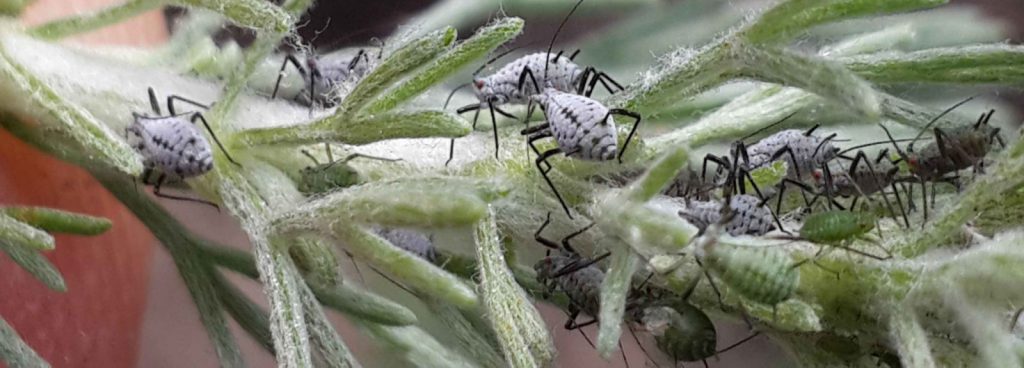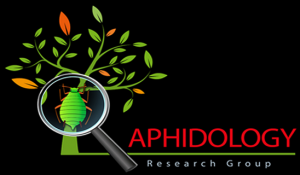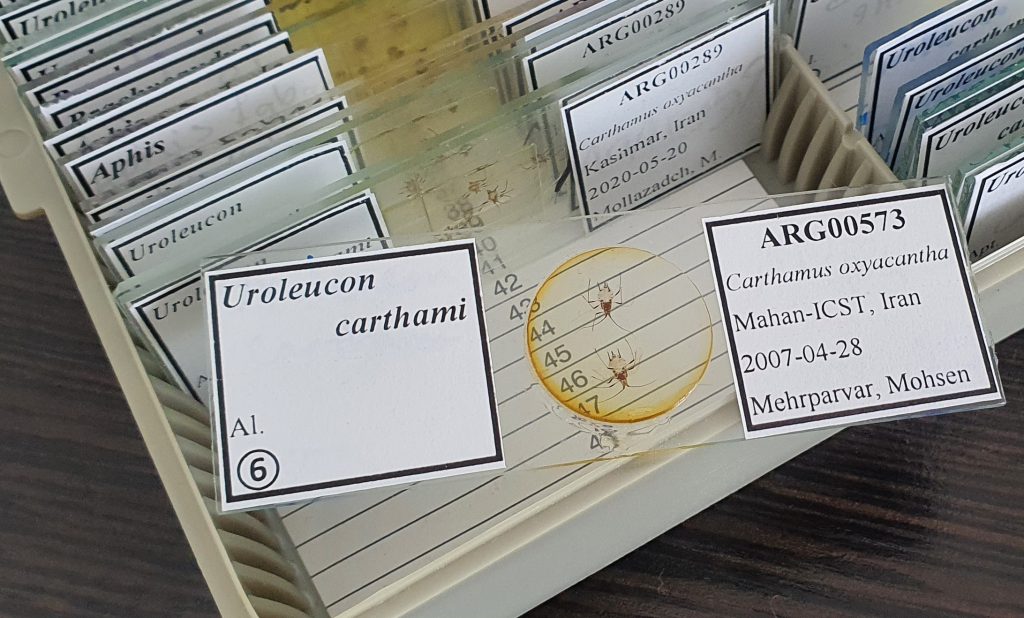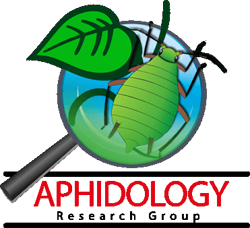Aphids: life cycle, reproduction, morphs and dispersal
Aphids, are known as plant lice, are small sap sucking insects, and members of the infra-order Aphidomorpha in the order Hemiptera with Worldwide distribution. They are among the most important group of insects that considered as serious pests on cultivated plants in temperate regions. So far more than 6000 aphid species have been identified in the world which are increasing in number day by day.

Aphids are small (1-10 mm. in length), soft–bodied insects which feed on the phloem of their plant hosts using mouthparts comprising piercing stylets (Miyazaki 1987b). These insects exhibit a various range of relatively complicated life cycles. Each has a number of different stages and for each stage there are one or more specialist morphs. These morphs are adapted for specific purposes in the life cycle (Williams & Dixon 2007). They breed predominantly by apomictic parthenogenesis whereby largely genetically identical offspring are produced mitotically by a process involving “telescoping of generations” (see Blackman 1987; Dixon 1998).
The life cycles of aphids can be divided into two types based on how they utilize their host plant: 1) Non host–alternating life cycle (monoecious or autoecious) in which the aphids feed and reproduce on either one host plant or a few closely related plants during the year. They can produce eggs on the same group of host plants that is fed on by all of the parthenogenetic generations. 2) Host–alternating life cycle (heteroecious) in which aphids have two distinct types of host plants i.e. primary host plants which are mostly woody (e.g. Rosaceae) and secondary host plants which are herbaceous. In aphid species which retain an autumnal sexual phase, following mating of the sexual morphs, overwintering is achieved as cold–hardy eggs on the primary host, whilst in the following spring and summer, winged asexual females are produced and migrate back to the secondary host where they produce numerous parthenogenetic generations. In the autumn, winged forms (males and pre–sexual females or gynoparae) are induced within the asexual lineages as a result of the short day length and low temperature conditions, and migrate back to the primary host and thereupon lay eggs, thus completing the life cycle (and in effect resetting it) (Blackman & Eastop 2000; Dixon 1998; Kawada 1987; Williams & Dixon 2007). In terms of egg production in aphids, there are two types of life cycles. Some aphid species are holocyclic, meaning that they produce eggs in their annual life cycles, although some other species never produce eggs and overwinter as asexual females (virginoparae) or as nymphs; this group are described as anholocyclic. In between, there are some aphid species that show both holocycly and anholocycly (Dixon 1998; Simon et al. 2002; Williams & Dixon 2007). In species with a sexual phase, at the beginning of the spring, the first morph to hatch from the overwintering egg is termed the fundatrix (i.e. first asexual female or initial asexual lineage stem mother); these morphs begin to reproduce by parthenogenesis and give birth to other parthenogenetic females that establish several generations during the year. An aphid’s lifespan within an asexual lineage is generally short and within a relatively few days (usually 7-10) soon become adult (Dixon 1998; Kawada 1987).
In aphids, various types of morphs occur in relation to biological characters in their life cycle. There could be five or even more different adult female phenotypes in the life cycle of an aphid lineage, as found in connection with heterogony and host alternation. Different morphs are specialized for different tasks such as reproduction, dispersal, and surviving severe or less favorable climatic or nutritional conditions (Kawada 1987; Miyazaki 1987a). One of the most common morphs in aphids is the winged morph, specialized for dispersal. The two main advantages of producing winged dispersal morphs in aphids are migration and dispersal between different host plants, and escape from adverse environmental conditions (Dixon 1998; Kawada 1987). In a metapopulation setting, dispersal is even more important as each plant is essentially an island of resource separated by unsuitable habitat that the aphids have to navigate before reaching the next suitable plant.
Useful Links
*
*
*
*
Aphid Identification
(Characteristics of genera)
*

* * *
=====================
Preservation & Mounting Aphids

References:
Blackman, R.L. (1987) Reproduction, cytogenetics and development. In: Minks, A.K. & Harrewijn, P. (Eds.) Aphids, their biology, natural enemies and control Elsevier, Amsterdam, pp. 163-195.
Blackman, R.L. & Eastop, V.F. (2000) Aphids on the world’s crops (An identification and information guide). John Wiley & Sons, London, UK,pp.
Dixon, A.F.G. (1998) Aphid Ecology: An optimization approach. Chapman & Hall, London, 300 pp.
Kawada, K. (1987) Polymorphism and morph determination In: Minks, A.K. & Harrewijn, P. (Eds.) Aphids, their biology, natural enemies and control Elsevier, Amsterdam, pp. 255-266.
Miyazaki, M. (1987a) Forms and morphs of aphids. In: Minks, A.K. & Harrewijn, P. (Eds.) Aphids, their biology, natural enemies and control Elsevier, Amsterdam, pp. 27-50.
Miyazaki, M. (1987b) Morphology of aphids. In: Minks, A.K. & Harrewijn, P. (Eds.) Aphids, their biology, natural enemies and control Elsevier, Amsterdam, pp. 1-25.
Simon, J.C., Rispe, C. & Sunnucks, P. (2002) Ecology and evolution of sex in aphids. Trends in Ecology & Evolution, 17, 34-39.
Williams, I.S. & Dixon, A.F.G. (2007) Life cycles and polymorphism. In: van Emden, H.F. & Harrington, R. (Eds.) Aphids as Crop Pests. CAB International, Wallingford, pp. 69-85.
